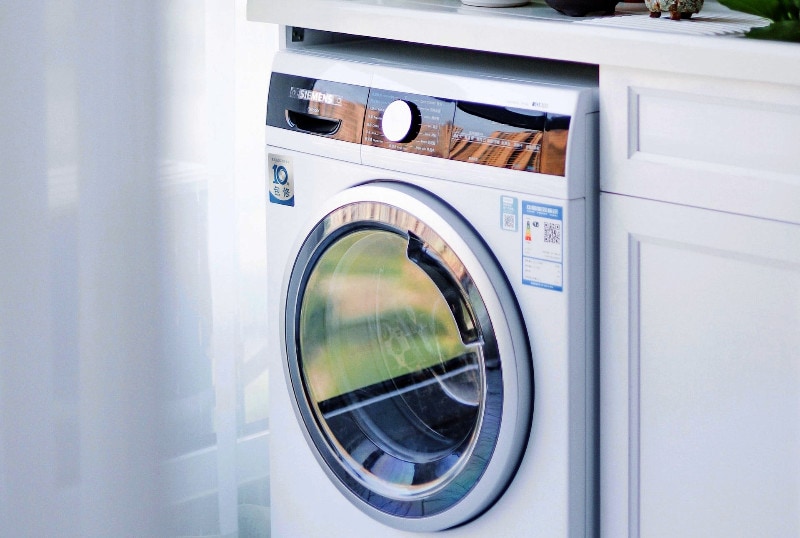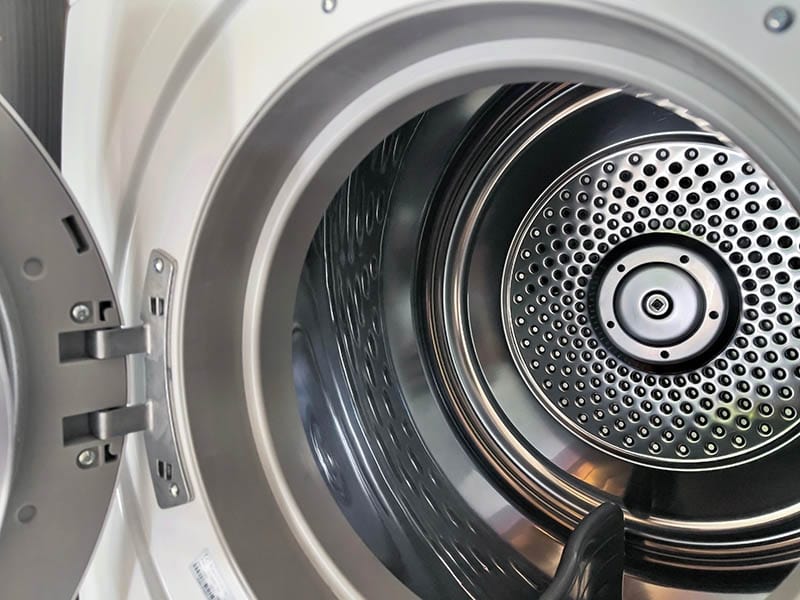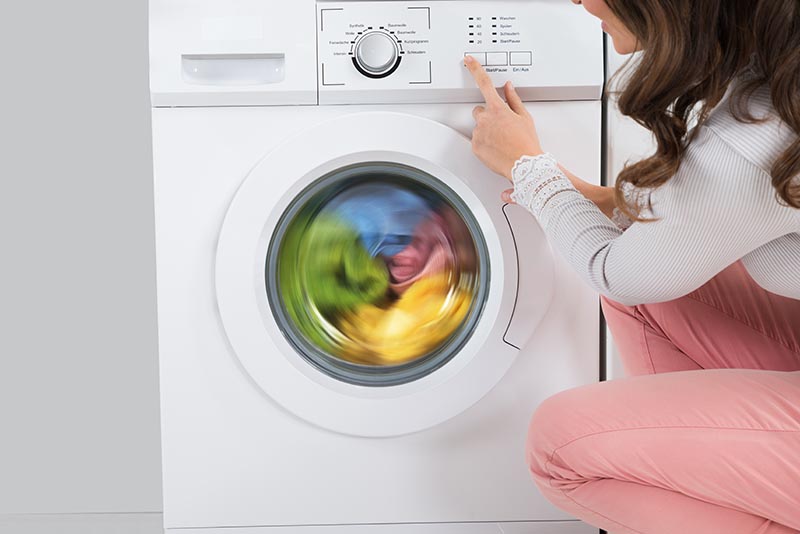Who Invented the Clothes Dryer, and When? History of the Dryer
-
Greg Iacono
- Last updated:

Humans are all about creating things that save time and energy, and nothing is a better example than the clothes dryer. While earlier generations used to hang their wash outside to dry, most Americans today use their clothes dryer because it saves them, you guessed it, time and energy.
But who invented the clothes dryer, and when was this marvel of modern-day life first sold? The modern-day clothes dryer can be traced back to J. Ross Moore, an inventor from North Dakota. His original clothes dryer design, which is more or less how dryers still work today, was first released to the American market in 1938.
That’s not the end of the dryer’s story, however. There were examples of dryers as far back as the 18th century. Plus, many modifications were made to Moore’s design after 1938, leading to today’s modern dryer models. If you’re curious about the entire history of the clothes dryer, read on. We have all the dates, places, and people who make up the history of this time-saving, stress-reducing appliance below.
The Original Clothes Dryers Were Massive Metal Beasts
At the end of the 18th century, France and the United Kingdom had metal clothing dryers used mainly by the ruling class. These metal beasts were called “ventilators” and were massive. They were operated by hand using a large crank and were heated over an open fire. As you might imagine, it was smoky, dangerous, and ridiculously hot work for the poor workers who washed and dried the clothes.
Indeed, while the ventilators did (slowly) work, most clothes smelled of smoke and were covered in soot and ash when they were finally dried. Also, a few pieces of clothing would inevitably catch on fire while being dried, leaving them with holes that needed to be patched or ruined completely. In other words, while they worked, the earliest clothing dryers did not work well and left clothes nearly as dirty and smelly as they started.

How Do Clothes Dryers Work?
The fantastic thing about clothes dryers is that they all work using the same principles, no matter how basic they are or how loaded with bells and whistles. First, you put your wet clothes into the dryer’s metal tumbler drum. When you turn it on, the tumbler is rotated by an electric motor. While it does, a fan circulates hot air that’s been heated with a heater. The heater is powered by either electricity or natural gas. As the tumbler rotates, the heater heats, the fan blows heated air, and your clothes eventually get dry. Also, warm, moist air is vented out and away from the dryer as they dry.
Today, condenser dryers also dry clothes by condensing the steam into water. Also, condenser dryers with heat pumps allow you to dry your clothes in a very low and gentle setting. Still, most modern dryers use the same basic system that’s been used for over 100 years (and do a good job of it, too).
What Are the 4 Types of Clothes Dryers Available Today?
While they all use similar basic technology, today, there are four types of clothes driers to choose from, all with their individual features, attributes, and drawbacks. Below we take a quick look at all four.
Standard Dryers with Vents
As we talked about earlier, a standard or traditional dryer uses a heater to raise the temperature and vent moist, hot air away from your clothing and out the back as they dry. They use an aluminum venting tube and need an escape vent in an outside wall to function correctly.
Ventless Dryers
Ventless dryers use a heat exchanger to condense the moisture in your clothes and drain it into a small water container in the machine. That way, there’s no vent, and you can use the dryer in scenarios where a vented dryer would not be feasible because no escape venting or tubing is needed.
Condenser Dryers
Condenser dryers heat air they pull in from outside your dryer, then use a condenser to cool it, pumping it out afterward. This process repeats until your clothes are dry.
Heat Pump Dryers
Amazingly, heat pump dryers use about 50% less energy than standard and condenser clothes dryers. They do this by passing hot and cold air through a system similar to your refrigerator, drying your clothes quickly and economically. The problem is that heat pump dryers are one of the most expensive types, so many folks still choose conventional dryers.

How Did People Dry their Clothes Before Clothes Dryers?
Most people used to dry their clothes before clothes dryers, the same method millions worldwide still use to dry their clothes today, by hanging them outside on a clothesline. Clotheslines, and the clothespins people use with them, are an easy and cheap way to dry clothes. The reason is that they use no electricity or gas. That’s great news for the planet, but not so much for anyone who wants to get their clothes dried quickly or easily.
Another way that people dried their clothes before clothes dryers was by laying them over bushes, shrubs, hedgerows, and even flat on the grass. This drying method was easier if you didn’t have a clothesline, but it left many clothes with stains from plants and dirt. Also, it allowed different types of insects to enter the clothes and, in some cases, ruin them.
What Came First, the Washing Machine or the Clothes Dryer?
Although it might seem like they’ve been around forever, the washing machine and dryer are relative latecomers to human inventing. For example, the bow and arrow have been around for between 20,000 and 70,000 years, humans invented the wheel about 5,500 years ago, and glass was first invented about 6,000 years ago.
It’s been less than 260 years since the first washing machine and dryer were invented, but the washing machine definitely came first. That was in 1767, when a man in Germany, Jacob Christian Schaffer, invented his first “washing tub.” At the time, all clothes were air dried as air drying was the only method available.
Some Historic Firsts for Clothes Dryers
The differences between the first clothes dryers and the sleek machines we use today came about via trial and error, innovation, and inventors always looking for a better, faster, easier, and cheaper solution. Some of the milestones between then and now include the following:
- 1947: General Electric and Whirlpool corporations released their first top-loading washing machines. (Not dryers, we know, but still a big first!).
- 1949: The first automatic dryer is released on the market.
- 1950s: The “spin cycle” and tub agitation were added to dryers.
- 1959: Sensors are introduced to sense if clothes are dry and turn off the dryer automatically, saving big bucks for homeowners on their electric bills.
- 1960: Permanent press is added to dryers as a special cycle for that type of clothing.
- 1983: Dryer timers are added as a new feature. This innovation allowed homeowners to place their dryers on a timer and take advantage of lower electric rates at night.
- 1990s: Ventless dryers are invented.

What’s the Typical Lifespan of a Dryer?
The average dryer lasts about 13 years, although if you take care of it well, that can increase substantially. The fact is, conventional dryers don’t use complicated machinery that breaks down quickly. If yours is a basic model, it will probably last 2 decades, although newer dryers with high-tech electronics and multiple settings tend to break down more frequently.
Here’s a good rule of thumb if you’re faced with repairing a dryer. If the cost to repair is less than 50% of the price of buying a new dryer, have the old dryer repaired. If the cost is over 50%, financial experts recommend that you sell or donate the old dryer and get a new one.
Final Thoughts
Although it’s kind of a dry subject (pun intended), the history of the clothes dryer is still fascinating. While humans have been using clothes for millennia, it wasn’t until recently that we invented the machine to wash them for us and eliminate this back-breaking, tedious household chore. Today, most people have a dryer in their homes, at least in the United States, Europe, and many other countries. In developing countries, however, clothes are more often dried by hanging them outside on a line.
- http://www.washcycle.com/history-clothes-dryer/
- https://www.theclassroom.com/commonly-used-household-items-in-the-1960s-13412205.html
- https://international.gorenje.com/products/major-domestic-appliances/washing-drying/everything-you-wanted-to-know-about-tumble-dryers
- https://interestingengineering.com/innovation/9-of-humanitys-most-important-first-inventions
- https://dundasjafine.com/support/the-evolution-of-dryer-venting/
- https://www.whirlpool.com/blog/washers-and-dryers/what-is-a-ventless-dryer.html
- https://capitalrepairs.co.uk/news/why-your-appliances-should-really-be-lasting-longer/
See also:
Featured Image Credit: Raychan, Unsplash
Contents

